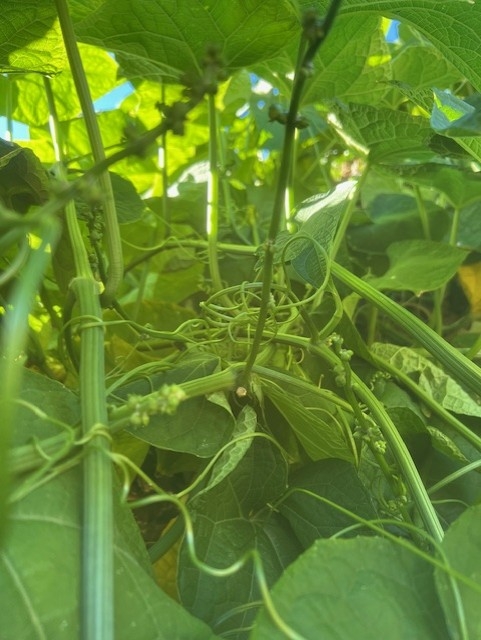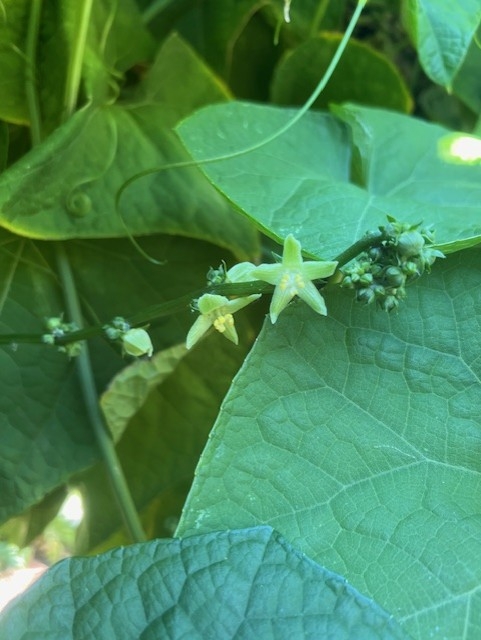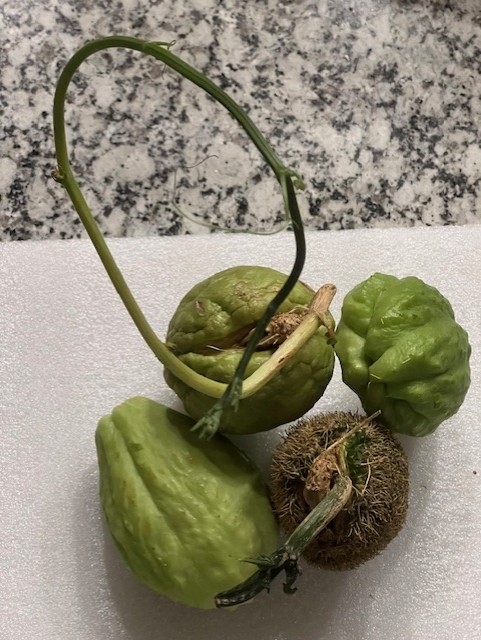Filipino-American History Month (FAHM) is a yearly event in October to commemorate the arrival of the first Filipinos in the continental United States at what is now Morro Bay, California on October 18, 1587.
On October 15, we celebrated Fil-Am History Month at the Vallejo Peoples Garden (VPG) by doing a presentation on Filipino cultural vegetables. A group of Filipino-American students and faculty from Solano Community College attended the event.
I presented two vegetables extensively cultivated in the Philippines and grown at VPG on Mare Island:
CHAYOTE
Chayote is a perennial vegetable vine that grows abundantly in the Philippines. Here in Solano County, chayote is a perennial vegetable and often grown as an annual.
The chayote fruit comes mostly in green or yellow green smooth skin; or dark green color with sharp spines on the skin. (Ouch on the latter so be careful when handling)! We planted our first organic chayote vine at VPG with the green/yellow skin three years ago and are now growing the dark green spiney chayote since last year.
The chayote fruit is irregularly oval-shaped and grooved. The large edible seed is surrounded by meaty flesh. A prolific vine grower, one plant can produce 60-80 palm-sized fruits. Our harvest last year yielded more than that I believe.
HOW TO GROW CHAYOTE
• Look for an older fruit with tough skin. Buy organic chayote if available at your local grocery.
• Leave the fruit on the kitchen counter until the sprout emerges. Chayote seed sprout will germinate only inside the fruit.
• Plant the whole fruit in a pot with the tip of new growth just peeping out of the soil.
• Leave the chayote in the pot until the last frost danger is past (late March/early April).
• Set the fruit in the ground edgewise and slanted.
• Plant the vine in rich, well-drained soil next to a sturdy fence or trellis where it will climb by tendrils.
• Some literature says two plants are required for cross-fertilization. Others say, “Bury lone fruit, produce an epic plant.” At VPG, we only planted one fruit.
• Chayote requires full sun and deep watering at least once a week. Mulch around the vine for moisture retention.
• Chayote is a long-season growing plant; the vine can grow 30 ft. or more before it starts blooming.
• Sprays of green blossoms will appear when the days begin to shorten.
• Chayote fruiting can begin in October until the earliest frost.
• At the Vallejo Peoples Garden we cut back the vine close to the ground after fruiting leaving only a few good stalks. We mulch heavily around the plant to conserve moisture. Where the ground freezes, the root tubers can be dug up and stored for replanting in the springtime.
CULINARY USES OF CHAYOTE
All parts of the chayote vine are edible: from the root tubers to the tender tips of the vines.
. Chayote has a subtle taste; it is adaptable to the flavor of other ingredients like tofu.
• It is used in Indian chutneys, Asian stir-fries, French quiches and New Orleans pies.
• Chayote can be used as a substitute for squash, cucumbers and potatoes.
• It can be pickled or eaten raw in salads.
• Mexicans steam the fruit, dip it in salsa, or use it in stews.
• I stir-fry chayote with shrimp, tomatoes, and mushrooms.
I also use it as an ingredient for making pancit (noodles) and chicken soups.
Truly, chayote is a versatile vegetable and you can expect a bumper harvest from only one plant!
I will cover the next cultural vegetable on my next blog.
Meanwhile, happy chayote planting!
Nov 14, 2024



